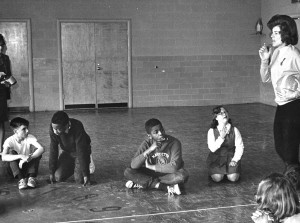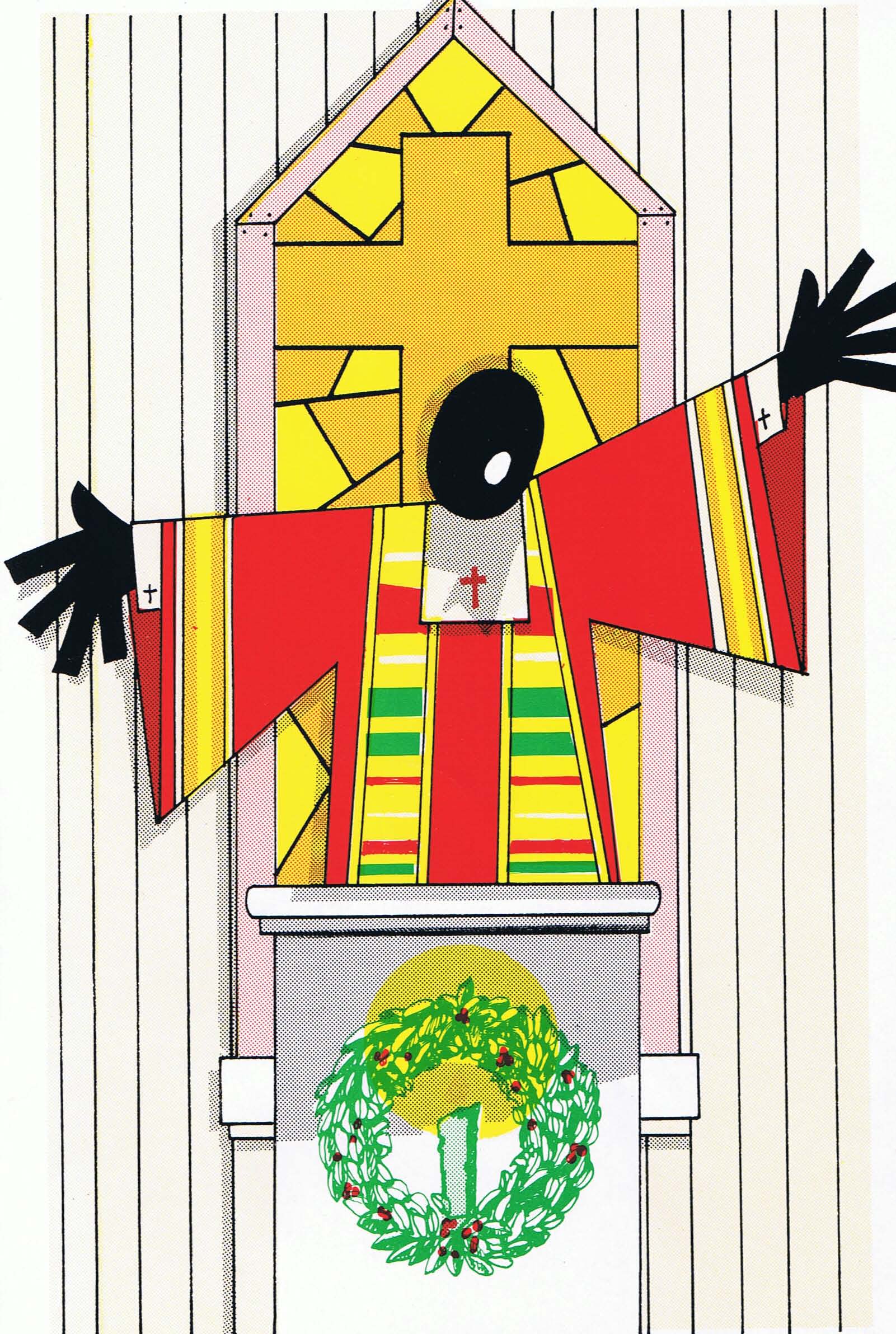A Washington Post reporter, Catholic special education and the Kennedy family
In October 1956, Ed Fouillard, a Washington Post political reporter, was covering Adlai Stevenson. At an event at a Knights of Columbus Hall in Elkins, West Virginia he sat next to Robert Kennedy. Fouillard, whose son Michael attended Holy Spirit, a fledgling school for “mentally retarded” children in Washington, DC, told Kennedy about the school and that he’d read in the Catholic Standard newspaper that Joseph Kennedy funded schools for the disabled. In a 1976 interview, reprinted in a history of the Kennedy Institute, Fouillard noted that Bobby Kennedy said nothing in response.
Fast forward to April 1957. Fouillard runs into the family patriarch, Joe Kennedy, at a Senate hearing. Joe mentions that “Jack [Fouillard says he thinks he meant Bobby] was telling me about your boy and about that school. I am interested.” Fouillard immediately calls the Sisters of Notre Dame de Namur to tell them. A few days later, Ethel Kennedy calls him and comes to visit the school, then in the basement of a convent at North Capitol and K Streets.
Next, Fouillard drafts a letter to Ethel Kennedy. The letter is forwarded on to Joe and a few days later, Ethel contacts Fouillard, saying, “Grandpa is willing to go for a half-million.” Then-Archbishop O’Boyle, who was deeply committed to providing education and services for those with disabilities, contributed the other $500,000 and the Lt. Joseph P. Kennedy Institute was founded. Now a program within Catholic Charities, on October 1, 2009, it will celebrate its 50th anniversary of service at 801 Buchanan Street, NE, Washington, DC.
Eunice Kennedy Shriver’s Role
As a 1970s-era history of the Kennedy Institute found in the archives of the Archdiocese of Washington notes that Eunice Kennedy Shriver, director of the Kennedy Foundation, “wanted to prove through model recreation and sports programs, that retarded children and youth could not only enjoy these leisure time opportunities, but that, through such stimulation, these youngsters would improve in all aspects of their personality – psychological, emotional and mental.”
Living out this belief, she became the driving force behind the physical education program at the Kennedy Institute. In January 1965, she established and funded, through the Kennedy Foundation, a Saturday Recreation Program. Students participated in morning activities either at the school or off-site. Believing more was needed, she next pushed for regular physical education as part of the curriculum and volunteered as a physical instruction teacher at the school from September 1965, for two years.

(Eunice Kennedy Shriver teaches physical education circa 1965 at the Lt. Joseph P. Kennedy Institute of the Archdiocese of Washington)
As Dolores Wilson, one of the founding staff of the Kennedy Institute recalls: “Each time [she came to teach], she brought along one of her own children, beginning at a ‘toddler’ age. The weather did not matter. All five classes were alerted that Mrs. Shriver was here and ready to meet them outdoors in the school yard for their exercises. She spent a half hour with each class. We bundled up the little ones who did not want to go outside in the cold and if they were too slow, Mrs. Shriver appeared at the classroom door with ‘Sista, sista, are the children ready yet?’ Mrs. Shriver came to our school for two years and was our teacher, our helper, the one who encouraged us and was grateful for the work being done to spread the word of caring for families and children with special needs. Mrs. Shriver became our friend!”
Inclusion Program at Our Lady of Mercy School
Eunice Kennedy Shriver, of course, went on to found the Special Olympics. She also obtained the funding – $150,000 – to start a model inclusion program for Our Lady of Mercy School in Potomac. The principal at that school today herself was inspired as a teen volunteer at Camp Shriver.
Never to forget the vulnerable, Eunice Kennedy Shriver also was an advocate for the unborn, writing on their behalf in publications and encouraging support for pregnant women in need. She received the 1982 National Figure Award from the Archdiocese of Washington’s Catholic Youth Organization and the 1996 John Carroll Medal from the John Carroll Society.
In the 1990s, working with Archbishop Donald Wuerl (then Bishop of Pittsburgh) she helped develop the Rose Fitzgerald Kennedy Program, a religious education curriculum for children with special needs that has been implemented in dioceses nationwide.
 Yesterday, I was on the phone call with a young adult leader discussing topics for an upcoming lecture series, when he made the following comment:
Yesterday, I was on the phone call with a young adult leader discussing topics for an upcoming lecture series, when he made the following comment:
 Usually, when you see this headline, what follows is a story about a person or group who is unhappy with the church and wants it to change–now! So, it might surprise you to learn that these are the words of Pope Benedict XVI. Needless to say,I was interested in reading more and was really pleased to see that what he is talking about is a deeper understanding of the co-responsibilityof clergy and laity for parish life and for the work of evangelization.
Usually, when you see this headline, what follows is a story about a person or group who is unhappy with the church and wants it to change–now! So, it might surprise you to learn that these are the words of Pope Benedict XVI. Needless to say,I was interested in reading more and was really pleased to see that what he is talking about is a deeper understanding of the co-responsibilityof clergy and laity for parish life and for the work of evangelization.

